|
Displaying items by tag: Portrait
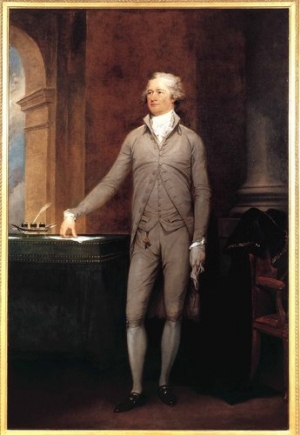
The international financial services group, Credit Suisse, has decided to donate a portrait of Alexander Hamilton by Revolution-era painter, John Trumbull (1756-1843), to not one, but two museums. The painting has been on loan to the Crystal Bridges Museum of American Art in Bentonville, Arkansas since it opened to the public in 2011.
Credit Suisse decided that giving the portrait to Crystal Bridges and the Metropolitan Museum of Art in New York, two well-known institutions, would maximize the public’s enjoyment of the work by expanding its audience. The shared ownership will see that the portrait remains in Arkansas until the summer, when it will travel to the Met for a year. The painting will return to Crystal Bridges in 2014 for another year. Eventually the painting will be on view at each museum for two-year stretches.
Credit Suisse acquired the striking full-length portrait in 2000 when it absorbed the New York-based investment bank Donaldson, Lufkin & Jenrette. Richard Jenrette, one of the bank’s founding partners, had assembled a remarkable art collection for the company that became part of Credit Suisse’s acquisition.
The New York Chamber of Commerce commissioned Trumbull to paint the Hamilton portrait in 1791 while he was serving as President Washington’s Secretary of the Treasury.
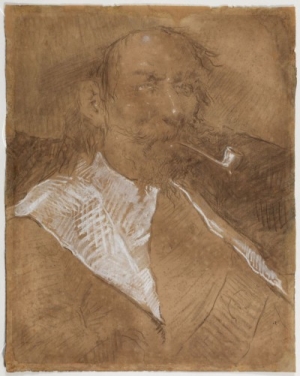
Staff members at the Picasso Museum in Barcelona, Spain discovered an early portrait by Pablo Picasso (1881-1973) while restoring a different work by the 20th century Spanish artist. Workers removed the cardboard backing on Portrait of the Artist’s Mother (1896), which was executed by a 15-year-old Picasso, revealing a charcoal drawing of a man with a pipe.
Reyes Jimenez, head of restoration at the Picasso Museum, believes that the charcoal work is older than the portrait of the artist’s mother. The charcoal drawing is an important piece because it illustrates Picasso’s artistic tenacity as well as his mastery of challenging techniques from a young age. The newly discovered drawing suggests that Picasso’s early knowledge was greater than previously believed.
The Picasso Museum, which opened to the public in 1963, houses one of the most extensive collections of artworks by Picasso. It was the first museum dedicated solely to the work of Picasso and the only one created during the artist’s lifetime.
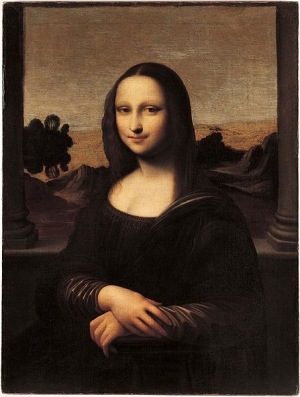
Recent tests on the Isleworth Mona Lisa support the theory that the painting pre-dates the Louvre’s world-famous portrait by Leonardo da Vinci (1452-1519). Hidden in a Swiss bank vault for 40 years, the Isleworth Mona Lisa was unveiled to the public on September 27, 2012, inciting rampant speculation about the work’s history. The Louvre’s Mona Lisa, which is believed to have been painted between 1503 and 1506, has been considered the only one of its kind for centuries.
The Swiss Federal Institute of Technology and Alfonso Rubino, a specialist in “sacred geometry,” carried out tests on the 15th century Isleworth portrait after its unveiling. Carbon dating determined that the canvas was manufactured between 1410 and 1455, shooting down claims that the Isleworth Mona Lisa was a late 16th century copy. Rubino’s geometric analysis also supported the da Vinci attribution, explaining that the geometry of the Isleworth portrait matched the geometry used by da Vinci in his other works including the Vitruvian Man (circa 1490).
The new findings combined with the existing scientific and physical research build a strong case for the Isleworth Mona Lisa. The Zurich-based Mona Lisa Foundation is even on board with the claim, vowing to pursue efforts to prove the portrait’s authenticity.

Pablo Picasso’s (1881-1973) Femme Assise Prés D’une Fenêtre (1932) sold for nearly $45 million at Sotheby’s Impressionist & Modern evening sale on Tuesday, February 5, 2013 in London. The coveted portrait of Picasso’s lover and muse, Marie-Therese Walter, came from a private collection and was last seen on the market in 1997 when it sold for $7.5 million. The portrait was guaranteed to sell due to a third-party “irrevocable bid” and while the buyer remains anonymous, some believe it was the guarantor, represented by Patti Wong, the chairman of Sotheby’s Asia.
The auction, which totaled $190 million, also included a separately catalogued section of 21 Surrealist works. All but three works sold, adding $26 million to the overall sale. Highlights from this section included Joan Miro’s (1893-1983) Femme revant de l’evasion (1945), which sold for $13 million and also carried a third-party guarantee.
Another considerable sale of the night was a series of three drawings by Egon Schiele (1890-1918), which brought $22 million. The works were put on sale by Vienna’s Leopold Museum. Another Schiele work, a pencil, gouache, and watercolor piece completed in 1915, sold to Wong on behalf a client for $13 million.
The sale was Sotheby’s second highest for an Impressionist sale in London.
On February 6 in London, a painting by the Italian artist Amedeo Modigliani (1884-1920) will lead Christie’s Impressionist and Modern Art Sale. Painted in 1919, Jeanne Hebuterne (au chapeau) is a portrait of Modigliani’s common-law wife seated in a wooden chair wearing a black hat and dress, illustrating the elongated form he is known for.
While Modigliani is one of Europe’s highest-selling modern artists, the market for Impressionist and modern art has slowed lately due to a lack of exceptional works in circulation. However, the upcoming sale at Christie’s is expected to bring as much as $237 million with the Modigliani portrait selling for as much as $35.5 million.
Jeanne Hebuterne appeared in a posthumous Modigliani retrospective in Venice in 1922. The portrait was bought from Sotheby’s, London for $26.4 million by a New York collector who is now putting it up for sale.

It was recently revealed that a Joan Miró (1893-1983) painting, which was damaged while on view at the Tate Modern in London, cost British taxpayers $326,000 to repair. Part of the museum’s retrospective of the Spanish modern artist, Painting on White Background for the Cell of a Recluse I (1968), was damaged when a visitor placed both hands against the work to steady himself after tripping and falling in the museum.
A white canvas sliced by a delicately wavering gray line, Cell of a Recluse I is one of five rare triptychs by Miró, which were exhibited together for the first time during the Tate retrospective in 2011. The work was immediately repaired after the incident, which left the acrylic on canvas painting with dents and markings. Cell of a Recluse I was on loan to the Tate from Barcelona’s Joan Miró Foundation and the British government paid the Foundation over $300,000 to cover the repair costs for the painting and to account for any loss in the work’s value due to the incident.
The Tate has recently been responsible for a string of damaged artworks including Mark Rothko’s (1903-1970) Black on Maroon (1958), which was defaced by a visitor, an early work by Roy Lichtenstein (1923-1977) titled Whaam! (1963), which was also marred by a museum patron, and a portrait of Margaret Thatcher by Helmut Newton (1920-2004), which was damaged when a staff member slipped and cracked the photograph’s glass frame.

A painting by the Italian master Tiziano Vecellio (circa 1488/1490-1576), who is known in English as Titian, was recently discovered in London’s National Gallery. Located in Trafalgar Square, the museum houses the country’s collection of Western European paintings from the 13th to 19th centuries.
The portrait by Titian, a pivotal member of the 16th century Venetian school of painters, depicts Girolamo Fracastoro, a well-respected doctor at the time, draped in lynx fur. The National Gallery has owned the portrait of Fracastoro since 1924 but until recently attribution has been uncertain. The Fracastoro portrait underwent thorough restoration, revealing new information about the canvas and technique, prompting scholars and curators to uphold the attribution.
The painting is now being displayed as part of the National Gallery’s main collection. The portrait of Fracastoro is the third Titian painting to join the museum’s holdings since 2009 making the National Gallery’s Titian collection one of the finest in the world.
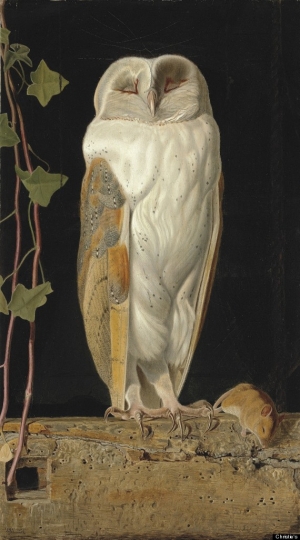
When Jane Cordery, an art teacher in Hampshire, England discovered a portrait of a white owl in her attic, she was struck by the painting’s sophisticated brushwork. Upon her unearthing, Cordery decided to email a photo of the work to Christie’s in London.
The auction house determined that the painting, titled The White Owl (1856) was the work of pre-Raphaelite artist William James Webbe (fluent 1953-1878) and valued the painting at $113,449. Further research proved that The White Owl had been exhibited at the United Kingdom’s Royal Society during the mid-nineteenth century. It was here that famed art critic, John Ruskin, viewed the work and remarked on its painstaking composition.
The Webbe painting headed to Christie’s Victorian art sale last week and sold for $951,050, exceeding its estimated price and setting the record for the artist at auction. An anonymous British dealer purchased The White Owl at the Christie’s sale. While Cordery claims she had never seen the painting before, her partner said that he received the work as a gift from his mother.

When the Crystal Bridges Museum of American Art opened its doors for the first time in Bentonville, Arkansas on November 11, 2011, the institution presented about 450 works of art, nearly half of its entire holdings. A little over a year later, the Crystal Bridges’ collection has ballooned and now includes over 2,000 artworks thanks to an active acquisition program led by Executive Director Don Bacigalupi, museum curators, and a solid leadership board. Within the past year, the Crystal Bridges Museum has acquired five sculptures, eight paintings, one mixed media work, 468 prints, and 504 works on paper, including photographs, drawings, and watercolors.
Museum officials were particularly excited to acquire a large painting by Abstract Expressionist artist, Mark Rothko, titled No. 210/No.2011 (Orange) (1960) and held an official unveiling back in October. The piece, which has only been exhibited twice in public, is currently part of the museum’s temporary exhibition, See the Light: The Luminist Tradition in American Art. After the show closes in late January, the Rothko work will be moved to the museum’s Twentieth-Century Art Gallery.
Other major acquisition include a portrait by American folk artist Ammi Phillips (1788-1865), titled Woman in Black Ruffled Dress (circa 1835); a neoclassical white marble sculpture completed in 1867 by William Wetmore Story (1819-1895); a contemporary mixed-media work from the early 1980s by Californian artist Miriam Schapiro (b. 1923); and a large painting titled Tobacco Sorters (1942-44) by the twentieth-century American artist, Thomas Hart Benton (1889-1975), which was commissioned by the American Tobacco Company.
A private collector who specialized in early twentieth-century works facilitated the major growth in the museum’s print department. The recent acquisitions vary in style from Benton’s Regionalism to Charles Sheeler’s (1883-1965) Precisionism and include drypoints, etchings, engravings, lithographs, screenprints, woodcuts, and wood engravings. A selection of recently acquired prints will be part of the temporary exhibition Art Under Pressure: Early Twentieth Century American Prints, which will be on view from December 21 through April 22, 2013.
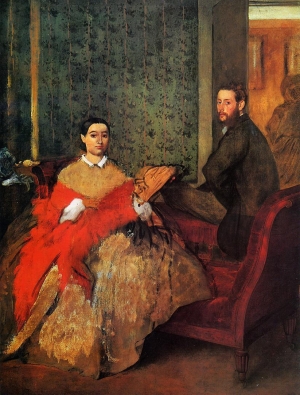
Patrons who are familiar with the permanent collection at Boston’s Museum of Fine Arts might become befuddled upon their next visit to the institution. Some of the museum’s finest works including Pierre-Auguste Renoir’s Dance at Bougival, the pivotal Claude Monet painting, La Japonaise: Camille Monet in a Japanese Costume, five works by Paul Cézanne, five more by Edouard Manet, and two of the masterpieces by Vincent Van Gogh are nowhere to be found.
While some of the works have been lent to museums in the United States, Japan, and Europe to enhance exhibitions, others have been rented to for-profit organizations. Loans between institutions are common practice, but compounded with the large number of works currently out on rent by the MFA, the museum’s own collection appears to be lacking. Currently, 26 of the MFA’s paintings are involved in exhibitions in Italy, which the institution received a hefty yet undisclosed fee for. Some of the works now on view in Italy are two paintings by John Singleton Copley and two Rembrandt portraits as well as single works by Eugène Delacroix, Paolo Veronese, Winslow Homer, John Singer Sargent, Paul Gauguin, Alberto Giacometti, and Pablo Picasso.
While the MFA is excited to be raising revenues, the act of charging fees for lending works has been a source of controversy. One of the main duties of public institutions, including art museums, is to share their collections with the public. Many objectors find the practice of lending works for profit to be in direct opposition to this goal.
Other major holdings that are not presently at the MFA are Diego Velázquez’s Luis de Gongora, two works by El Greco, two more by Gustave Courbet, the museum’s only painting by Edvard Munch, and arguably its greatest work by Edgar Degas, Edmondo and Therese Morbilli. While MFA officials argue that they are bolstering the museum’s international reputation, critics feel the institution is suffering for it.
|
|
|
|
|